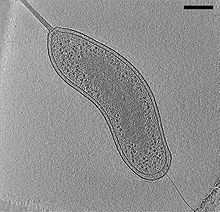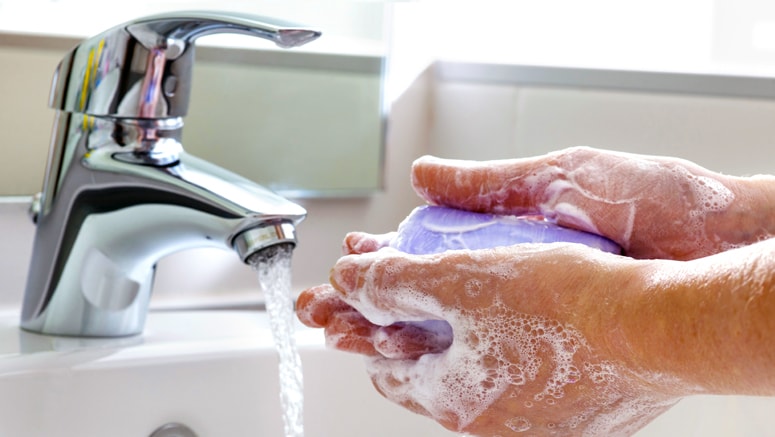 Hah! A study that builds on what is already known by many women - that the non-prescription product D-mannose works for urinary tract infections (UTIs). D-mannose is amazingly effective for urinary tract infections caused by E. coli bacteria (up to 90% of UTIs), even infections that keep recurring (30 to 50% of infections), and which don't respond to numerous antibiotics.
Hah! A study that builds on what is already known by many women - that the non-prescription product D-mannose works for urinary tract infections (UTIs). D-mannose is amazingly effective for urinary tract infections caused by E. coli bacteria (up to 90% of UTIs), even infections that keep recurring (30 to 50% of infections), and which don't respond to numerous antibiotics.
D-mannose is effective because it attaches to E. coli bacteria, and prevents them from attaching to the walls of the urinary tract. But as women know, there are many (all effective) D-mannose products on the market - so the big pharmaceutical companies can't claim it as their own (with patents) for the big bucks $$$.
So... this study is basically chemically reformulating the mannose sugar (which is in D-mannose) for a new product (mannosides) - one that they can claim as their own. Maybe it'll be a little better than ordinary D-mannose, and maybe not. Human studies are needed.
By the way, this study may be big news to physicians because most don't seem to know about D-mannose as a treatment for UTIs - they all seem to focus just on antibiotics and perhaps cranberry juice in treating UTIs. This may be because D-mannose is considered as an "alternative treatment". And I could find only one study that compares antibiotics and D-mannose for recurrent UTIs - and guess which one did a little better? Yup...D-mannose (see post). From Medical Xpress:
New treatment reduces E. coli, may offer alternative to antibiotics
Urinary tract infections (UTIs) are among the most common infections, and they tend to come back again and again, even when treated. Most UTIs are caused by E. coli that live in the gut and spread to the urinary tract. A new study from Washington University School of Medicine in St. Louis has found that a molecular decoy can target and reduce these UTI-causing bacteria in the gut. With a smaller pool of disease-causing bacteria in the gut, according to the researchers, the risk of having a UTI goes down...."This compound may provide a way to treat UTIs without the use of antibiotics."
Close to 100 million people worldwide acquire UTIs each year, and despite antibiotic treatment, about a quarter develop another such infection within six months. UTIs cause painful, burning urination and the frequent urge to urinate. In serious cases, the infection can spread to the kidneys and then the bloodstream, where it can become life-threatening. Most UTIs are caused by E. coli that live harmlessly in the gut. However, when shed in the feces, the bacteria can spread to the opening of the urinary tract and up to the bladder, where they can cause problems. Conventional wisdom holds that UTIs recur frequently because bacterial populations from the gut are continually re-seeding the urinary tract with disease-causing bacteria.
Hultgren, graduate student Caitlin Spaulding, and colleagues reasoned that if they could reduce the number of dangerous E. coli in the gut, they could reduce the likelihood of developing a UTI and possibly prevent some recurrent infections. First, the researchers identified genes that E. coli need to survive in the gut. One set of genes coded for a kind of pilus, a hairlike appendage on the surface of E. coli that allows the bacteria to stick to tissues, like molecular velcro. Without this pilus, the bacteria fail to thrive in the gut. Earlier studies found that the identified pilus attaches to a sugar called mannose that is found on the surface of the bladder. Grabbing hold of mannose receptors on the bladder with the pilus allows the bacteria to avoid being swept away when a person urinates. Bacteria that lack this pilus are unable to cause UTIs in mice.
Previously, Hultgren and co-author, James W. Janetka, PhD, an associate professor of biochemistry and molecular biophysics at Washington University, chemically modified mannose to create a group of molecules, called mannosides, that are similar to mannose but changed in a way that the bacteria latch onto them more tightly with their pili. Unlike mannose receptors, though, these mannosides are not attached to the bladder wall, so bacteria that take hold of mannosides instead of mannose receptors are flushed out with urine.
Since the researchers found that this same pilus also allows the bacteria to bind in the gut, they reasoned that mannoside treatment could reduce the number of E. coli in the gut and perhaps prevent the spread of the bacteria to the bladder. To test this idea, they introduced a disease-causing strain of E. coli into the bladders and guts of mice to mirror the pattern seen in people. In women with UTIs, the same bacteria that cause problems in the bladder usually also are found living in the gut.
The researchers gave the mice three oral doses of mannoside, and then measured the numbers of bacteria in the bladders and guts of the mice after the last dose of mannoside. They found that the disease-causing bacteria had been almost entirely eliminated from the bladder and reduced a hundredfold in the gut, from 100 million per sample to 1 million. .... researchers measured the composition of the gut microbiome after mannoside treatment. They found that mannoside treatment had minimal effect on intestinal bacteria other than the ones that cause most UTIs. This is in stark contrast to the massive changes in the abundance of many microbial species seen after treatment with antibiotics. Furthermore, since mannoside is not an antibiotic, it potentially could be used to treat UTIs caused by antibiotic-resistant strains of bacteria, a growing problem.

 Great idea and one that this blog has been pushing for a long time - the use of
Great idea and one that this blog has been pushing for a long time - the use of  Guess what? Instead of babying our backs, we may have to be sure to get plenty of running, jogging, or brisk walking to make our backs stronger - specifically, to strengthen the discs in our spines. Once again,
Guess what? Instead of babying our backs, we may have to be sure to get plenty of running, jogging, or brisk walking to make our backs stronger - specifically, to strengthen the discs in our spines. Once again,  Everyone has heard about the miraculous stories of recovery from cancer using immunotherapy. Immunotherapy involves giving the sick person substances which stimulate the person's own immune system to battle the cancer. And when it works, it's wonderful. But...there's another side - a dark side of the harms from these treatments - that is rarely discussed, and why we should be very careful going forward.
Everyone has heard about the miraculous stories of recovery from cancer using immunotherapy. Immunotherapy involves giving the sick person substances which stimulate the person's own immune system to battle the cancer. And when it works, it's wonderful. But...there's another side - a dark side of the harms from these treatments - that is rarely discussed, and why we should be very careful going forward. Stop using the damn antibacterial products! Yes, stop using stuff that says "antibacterial", "antimicrobial", "germ-killing", or "anti-odor". Whether in personal care items, or bedding, or socks, or hand wipes, or wherever else you see those labels - don't buy them and try to avoid using them. Plain soap works just as well for cleaning hands (see
Stop using the damn antibacterial products! Yes, stop using stuff that says "antibacterial", "antimicrobial", "germ-killing", or "anti-odor". Whether in personal care items, or bedding, or socks, or hand wipes, or wherever else you see those labels - don't buy them and try to avoid using them. Plain soap works just as well for cleaning hands (see  OK, the study results sound promising: that washing with cold water is as good as washing with warm or hot water for removing bacteria from the hands. And that type of soap didn't matter - both the anti-microbial soap and ordinary soap were equally effective. But...the researchers only looked at one strain of bacteria - E. coli (full name Escherichia coli (ATCC 11229)), and there are MANY microbes and viruses out there that cause problems. So I would view it as a nice start ( a preliminary study), but not the final word. From Science Daily:
OK, the study results sound promising: that washing with cold water is as good as washing with warm or hot water for removing bacteria from the hands. And that type of soap didn't matter - both the anti-microbial soap and ordinary soap were equally effective. But...the researchers only looked at one strain of bacteria - E. coli (full name Escherichia coli (ATCC 11229)), and there are MANY microbes and viruses out there that cause problems. So I would view it as a nice start ( a preliminary study), but not the final word. From Science Daily: